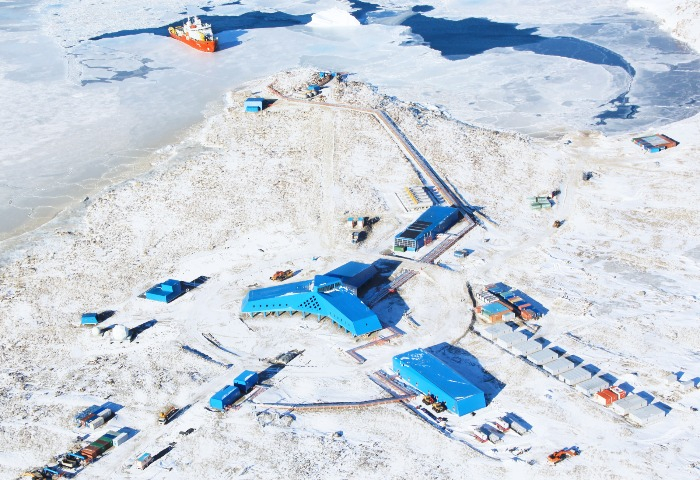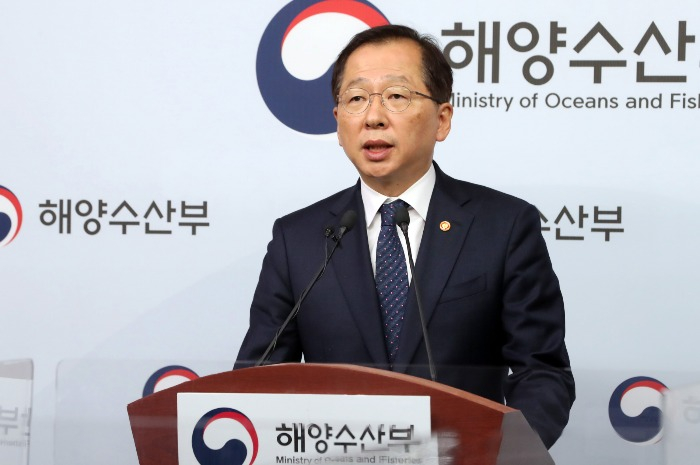ESG
South Korea aims to build world’s 6th inland base in the Antarctic
The new base will be the country’s third base in the region, following King Sejong Station and Jang Bogo Station
By Nov 22, 2022 (Gmt+09:00)
1
Min read
Most Read
LG Chem to sell water filter business to Glenwood PE for $692 million


KT&G eyes overseas M&A after rejecting activist fund's offer


Mirae Asset to be named Korea Post’s core real estate fund operator


StockX in merger talks with Naver’s online reseller Kream


Meritz backs half of ex-manager’s $210 mn hedge fund



The South Korean government announced on Monday that it will build the world’s sixth inland base in the Antarctic by 2030.
The Ministry of Oceans and Fisheries said that the First Basic Plan for the Promotion of Polar Activities was confirmed at a Cabinet meeting. The plan encompasses both the North and South Poles, in the areas of scientific research, economic activities and international cooperation.
Seoul plans to select the best location for its inland research by 2027 and build a base there by 2030, which will be the world’s sixth inland base to date.
Other inland bases have been established by the United States, Russia, Japan, a collaborative effort between France and Italy, and China.
Korea has two bases in the Antarctic so far, namely King Sejong Station on the Barton Peninsula and Jang Bogo Station located in mainland Antarctica.
While the Antarctic’s inland is a great resource for learning about the Earth’s environment a million years ago, exploration there requires the most advanced exploration technologies.

To aid the exploration efforts, Seoul will invest 277.4 billion won ($204.4 million) in building a 15,000-ton next-generation icebreaking research vessel.
The new vessel will be able to break sheets of ice that are up to 1.5 m in thickness while traveling at a speed of 5.6 km per hour. The current icer ARAON can only break sheets of ice that are up to 1 m in thickness.
The ministry plans to emerge as Asia’s leader in international studies on the Arctic Ocean from 2027.
Minister of Oceans and Fisheries Cho Seung-hwan said, “The government plans to execute the Basic Plan without issues to combat climate change and find the keys to the cutting-edge technology.”
Write to Eu-Jin Jeong at justjin@hankyung.com
Jee Abbey Lee edited this article.
More to Read
-
 Business & PoliticsTrump Jr. meets Korean business chiefs in back-to-back sessions
Business & PoliticsTrump Jr. meets Korean business chiefs in back-to-back sessionsApr 30, 2025 (Gmt+09:00)
-
 Korean chipmakersSamsung in talks to supply customized HBM4 to Nvidia, Broadcom, Google
Korean chipmakersSamsung in talks to supply customized HBM4 to Nvidia, Broadcom, GoogleApr 30, 2025 (Gmt+09:00)
-
 EnergyLS Cable breaks ground on $681 mn underwater cable plant in Chesapeake
EnergyLS Cable breaks ground on $681 mn underwater cable plant in ChesapeakeApr 29, 2025 (Gmt+09:00)
-
 Business & PoliticsUS tariffs add risk premium to dollar assets: Maurice Obstfeld
Business & PoliticsUS tariffs add risk premium to dollar assets: Maurice ObstfeldApr 29, 2025 (Gmt+09:00)
-

Comment 0
LOG IN


